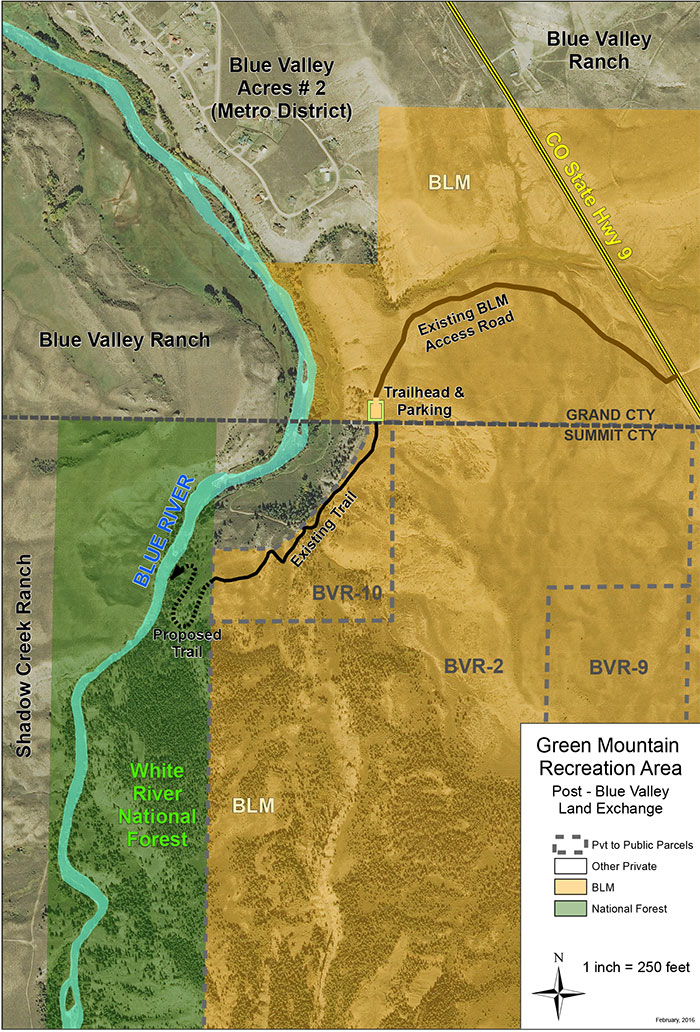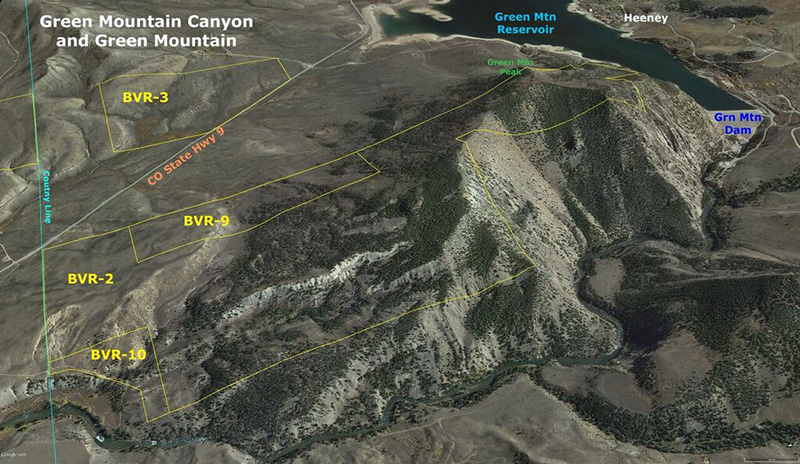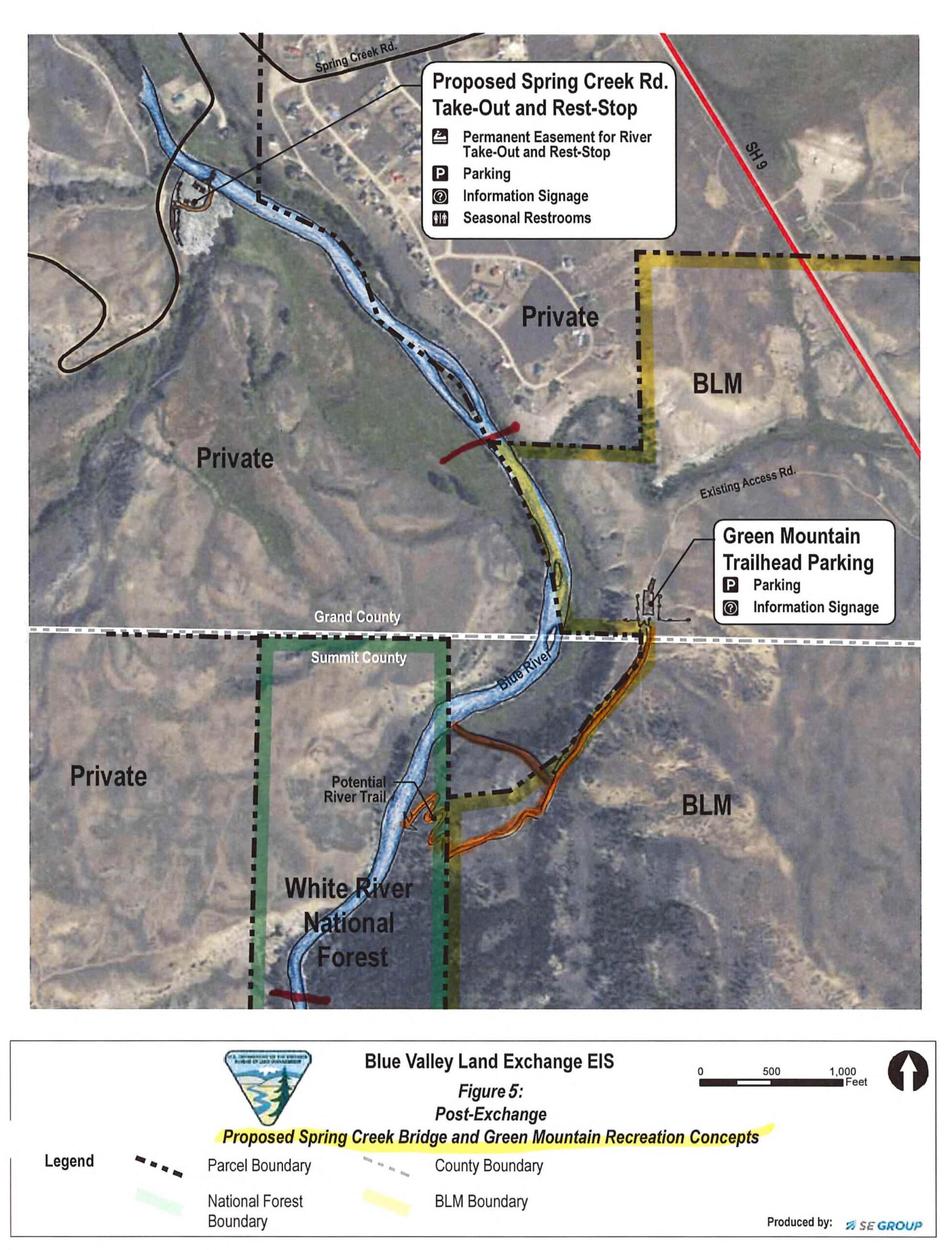Green Mountain Canyon has been nearly impossible for the public to visit on foot. The Blue Valley Land Exchange will change that. This video is a look at what the public will have the opportunity to enjoy.
Everyone will enjoy greater access to the Lower Blue River under the Blue Valley Land Exchange. It will provide new and greatly enhanced access to 1.65 miles of the river in Green Mountain Canyon where land ownership patterns and natural barriers have historically impeded pedestrian access to this reach of the Blue River. Anglers will discover a healthy brown trout population in the canyon. Hikers and campers will have the opportunity to explore a beautiful river canyon seldom before visited.
The Ranch has offered to grade an existing BLM road off Highway to a parking area and trailhead. From there, an existing trail will take visitors across what is currently a part of Blue Valley Ranch but will be conveyed to the BLM as Parcel 10 (BVR-10 on the map below) in the land exchange. The existing trail would then connect with a proposed trail on National Forest land to the east bank of the Blue River. From there, anglers and other members of the public will be able to hike through the lower half of Green Mountain Canyon which is currently virtually inaccessible to the public.
In addition, BVR will convey to BLM a trail easement along the Blue River on Ranch property for .18 miles connecting a parcel of BLM land to the north with National Forest land to the south. A trail connecting this fishing easement to the parking area will also be conveyed to BLM. As a result of the exchange, the public will have new and improved foot access to 1.65 miles of the Blue River as it flows north from approximately the mid-point of Green Mountain Canyon down across Ranch land to the existing BLM parcel on the north.
A significant benefit of the Blue Valley Land Exchange will be the preservation of Green Mountain itself. The Ranch will convey more than 750 acres of private land to the public, ensuring this landmark and its vistas will never be developed. This is landscape level conservation.





